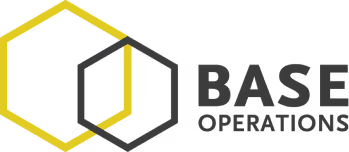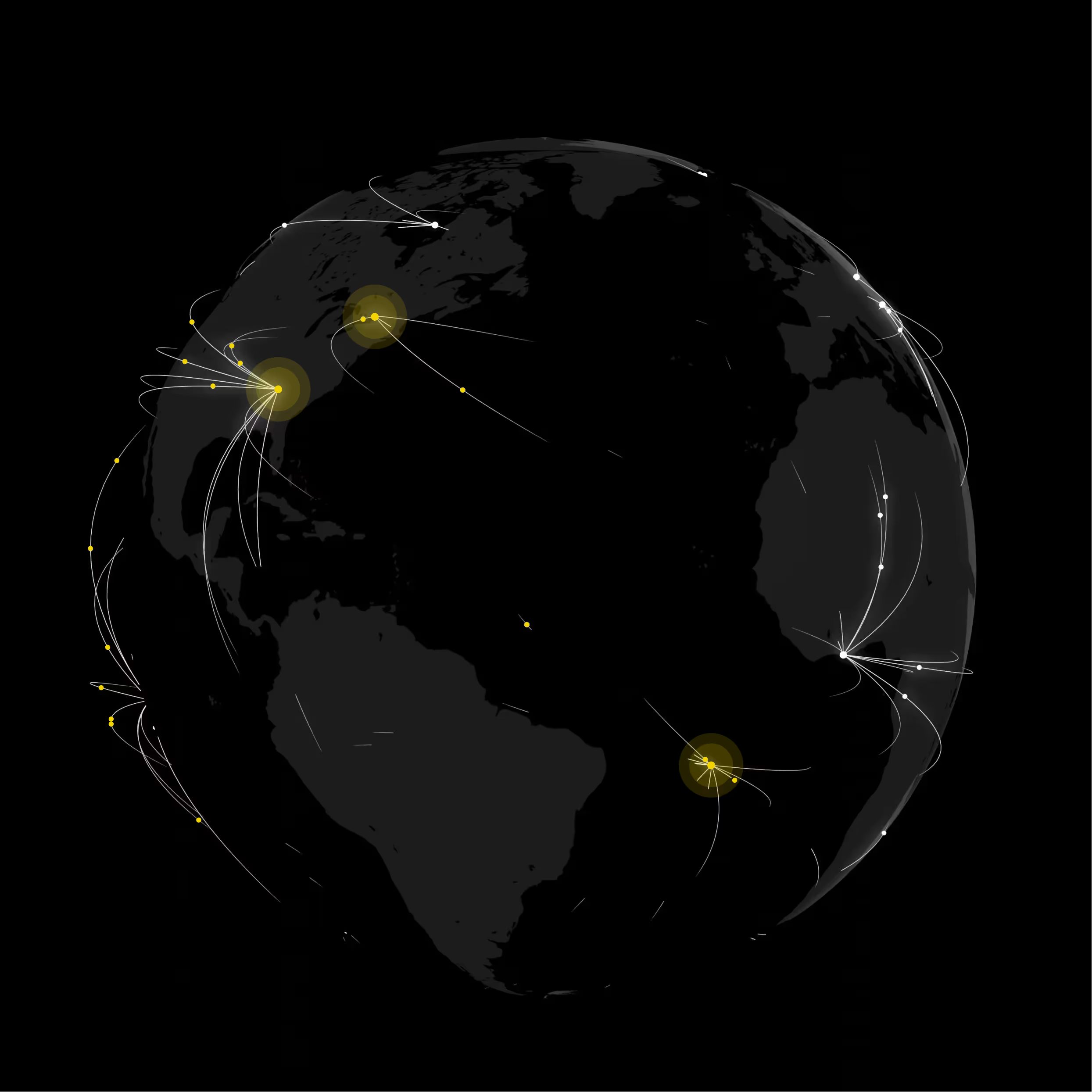
Credit Union Saves $180K Annually While Expanding Intelligence Coverage from District to Branch
Single-person GSOC transformed quarterly site assessments from 40+ hours of manual research per region into automated, standardized reporting across 30+ branches, enabling prescriptive resource allocation that cut security expenses by $45K per district annually.

80% time reduction
$180K annual savings
Common operating picture
Challenge
A single GSOC analyst managed quarterly site assessments for four regional security managers across 30+ branches—a 40+ hour process per region. District-level threat data forced identical security strategies across all locations regardless of actual local risk. High-risk branches lacked adequate protection while low-risk branches consumed budget on unnecessary security infrastructure. The security team couldn't justify resource allocation decisions or provide executive leadership with threat visibility across footprint.
Solution
The GSOC lead deployed Base Operations to create automated, standardized reporting accessible to all regional managers. The My Locations Dashboard provided executive leadership and regional security managers with visibility across the entire footprint, ranking of locations by risk, and monitoring changes in threat levels. API access to BaseScore data enabled them to unify external threat data with internal incidents. This enabled prescriptive resource allocation based on actual branch-level conditions rather than broad district assumptions.
Results
Assessment time dropped from 40+ to 8 hours per quarterly review. The organization achieved $180K in annual cost savings ($45K average per region) by eliminating unnecessary security infrastructure in low-risk branches while enhancing protection in genuinely high-risk locations. The My Locations Dashboard revealed dramatic threat variations—including a 23-point BaseScore difference between branches just 1.7 miles apart—enabling data-driven security benchmarks and transforming security from cost center to strategic advisor.
Three decades of branch-level site assessments. Four regional security managers waiting for quarterly intelligence reports. One GSOC analyst with 40+ hours of manual research standing between them and actionable security decisions.
Across 30+ branch locations spanning four distinct geographic districts, the credit union was deploying identical security infrastructure everywhere: the same guard force coverage, the same surveillance systems, the same access controls. District-level threat data suggested this uniform approach made sense. But when the GSOC & Intelligence Lead started examining actual crime patterns at the branch level, a different picture emerged. Threat environments weren't just varying between districts—they were varying dramatically between branches within the same district, sometimes within the same mile radius.
The Challenge
The GSOC lead carried sole responsibility for providing comprehensive quarterly site assessments to four regional security managers. Each assessment required understanding every branch's threat profile, identifying trends, and delivering specific recommendations for resource allocation across guard forces, surveillance, alarms, access controls, and license plate readers.
The process consumed 40+ hours per quarterly review. The GSOC lead pieced together data from disparate sources, manually researching crime statistics at the district or city level. By the time each assessment was complete, crime patterns had shifted and regional managers were making decisions based on outdated intelligence.
District-level data couldn't reveal granular threat variations between individual branches. A branch in a "moderate-risk district" might actually sit in a high-crime corridor requiring enhanced security. Conversely, a branch in a "high-risk district" might occupy a relatively safe sub-area where expensive technology delivered minimal risk reduction.
Without visibility into these variations, the organization defaulted to one-size-fits-all security. Every branch received similar guard coverage and technology investments regardless of actual local threats. High-risk branches lacked adequate protection while low-risk branches consumed budget on unnecessary infrastructure. When executive leadership questioned security expenses or requested threat visibility, the GSOC lead couldn't provide fast answers backed by data.
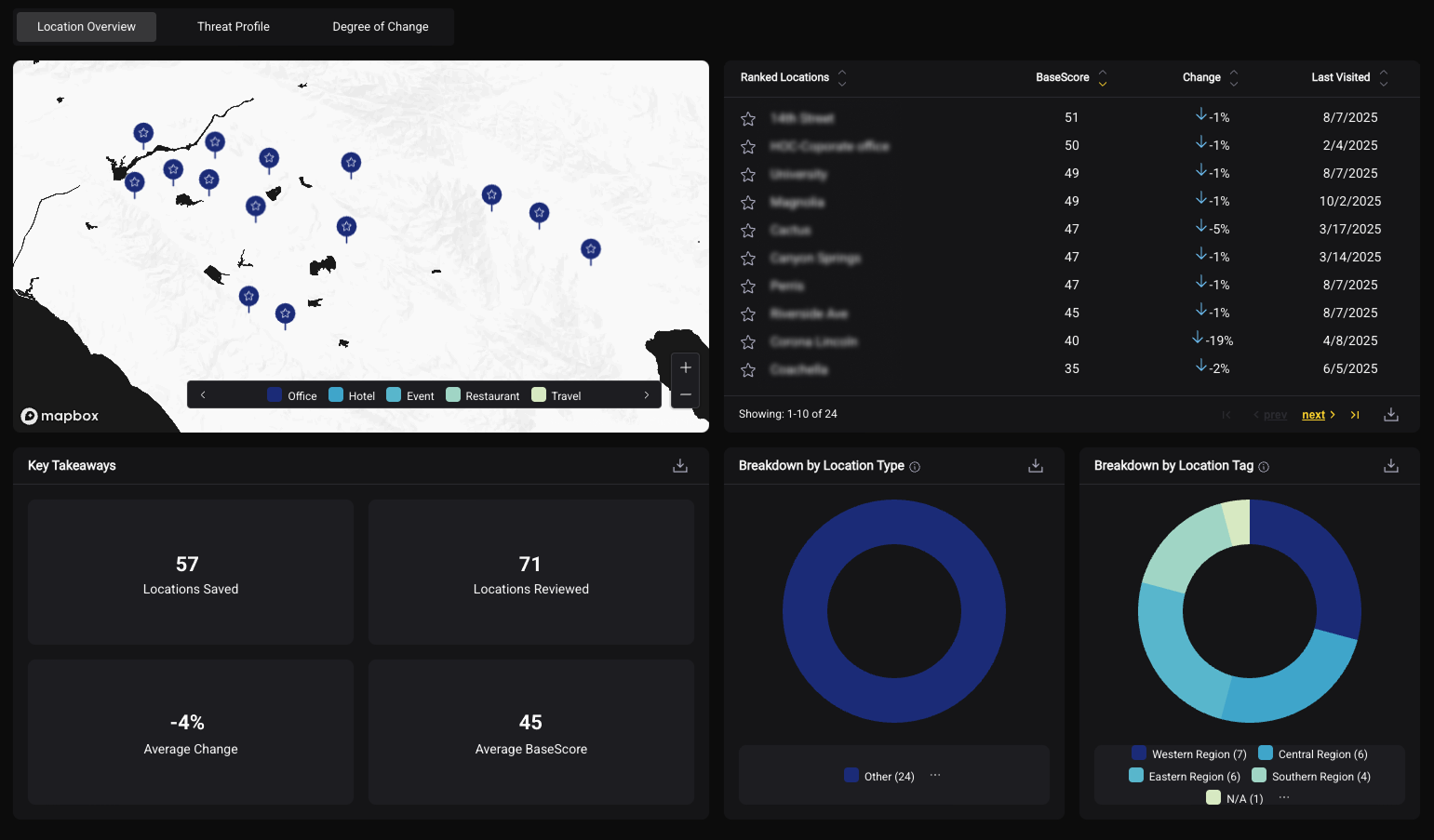
The Solution
The GSOC lead deployed Base Operations to transform security intelligence from a manual, time-intensive process into an automated system delivering consistent, granular insights across all 30+ branches.
Base Operations' street-level threat intelligence—aggregating crime data from 25,000+ global sources with sub-category breakdowns down to the block level—gave the GSOC lead visibility that district-level data could never provide. Instead of broad city-level assumptions, the security team could now see exact crime patterns within 0.1-mile radius areas surrounding each branch.
The My Locations Dashboard became the central intelligence hub. The GSOC lead configured all 30+ branches to automatically receive updated BaseScore risk ratings, threat breakdowns by crime subcategory, and trend analysis showing how local conditions were changing month over month. Quarterly assessments that previously took 40+ hours now required 8 hours.
The security team leveraged Base Operations' API to unify external threat data with internal incident reports, monitoring both external environments and internal security events daily. Regional security managers received dashboard access for direct visibility into threat conditions without waiting for quarterly reports. When executive leadership requested updates, the GSOC lead could provide granular data instantly with confidence.
Most importantly, the dashboard enabled prescriptive resource allocation. By comparing BaseScore ratings and threat subcategories across all branches, the security team could identify which locations genuinely required enhanced guard coverage, which needed additional surveillance technology, and which could safely operate with reduced security infrastructure.

The Results
After one year leveraging Base Operations, the credit union's security function transformed from a reactive cost center into a proactive strategic partner that directly contributed to operational efficiency and bottom-line savings.
Assessment time dropped from 40+ to 8 hours per quarterly review—an 80% time savings. The single-person GSOC team delivered more comprehensive, branch-level intelligence across four districts without sacrificing depth or accuracy. The GSOC lead shifted time from data hunting to insight generation, focusing on pattern analysis and strategic recommendations.
The My Locations Dashboard showed threat differences that district-level data had completely masked. In one district, two branches located 1.7 miles apart showed a 23-point BaseScore difference—one branch sat in an area with elevated property crime and violent crime, while the other occupied a significantly safer corridor despite being in the same "moderate-risk district."
These insights enabled prescriptive security resource allocation. The security team used Base Operations' sub-category crime breakdowns to match specific countermeasures to actual local threats. Branches in areas with high property crime but low violent crime received enhanced surveillance and alarms but not expensive weapon detection. Branches in areas with elevated violent crime received priority for guard force expansion, while branches in genuinely low-risk areas maintained baseline security without unnecessary infrastructure.
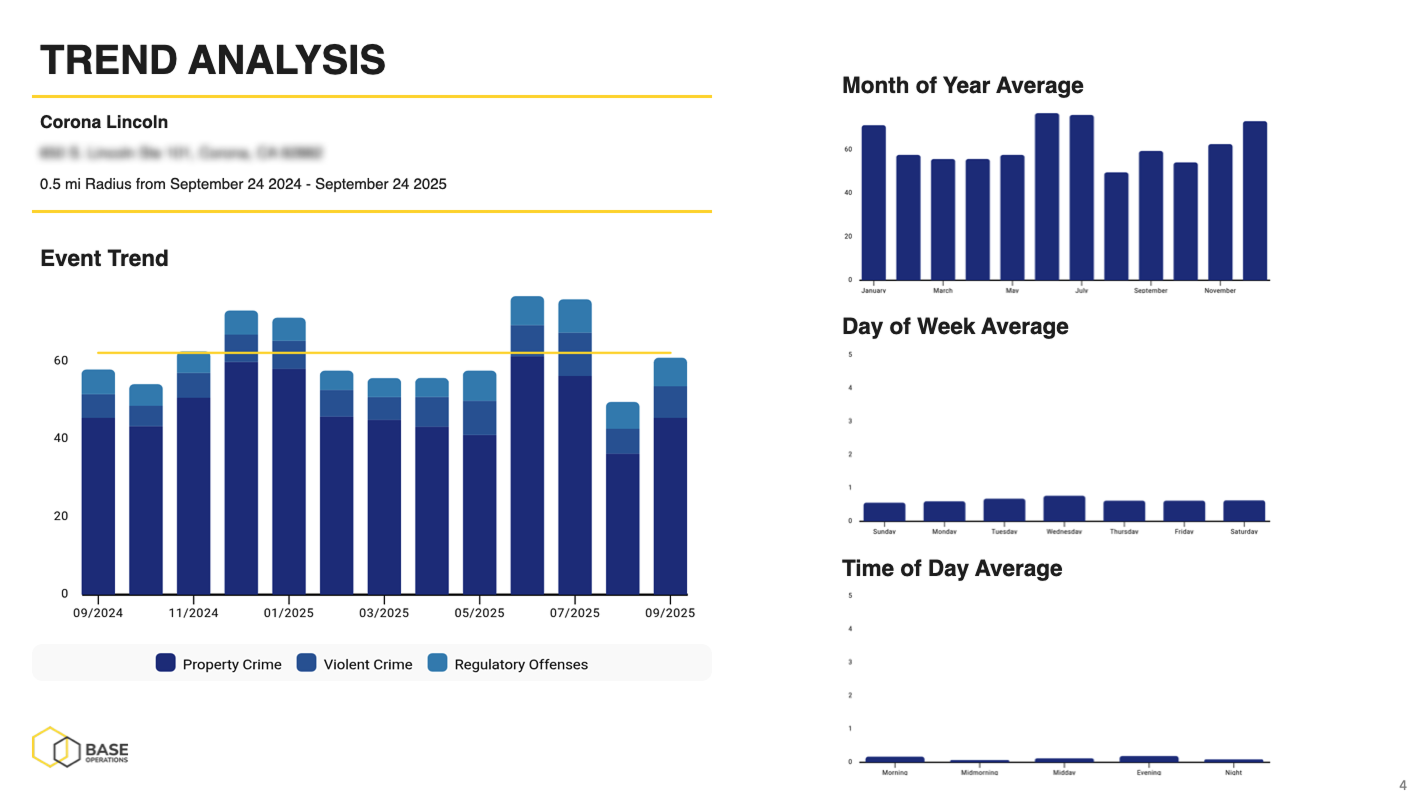
By comparing BaseScore ratings across all branches, the security team established data-driven security benchmarks. High and Very High Risk branches (BaseScore 60+) received tier-one protocols including enhanced guard coverage and advanced detection technology. Medium Risk branches (BaseScore 40-60) received tier-two protocols with standard coverage. Low-risk branches (BaseScore below 40) received tier-three protocols focused on access control without costly guard forces that delivered minimal risk reduction.
This benchmarking approach achieved an average net cost reduction of $45K annually per region, totaling $180K in annual savings across all four districts. These savings came from eliminating unnecessary guard force hours in genuinely low-risk areas, right-sizing surveillance deployments based on actual crime patterns, and avoiding weapon detection installations where violent crime occurred infrequently.
When executive leadership questioned security investments, the GSOC lead could now provide immediate, data-driven answers backed by street-level intelligence. Security recommendations became defensible business cases rather than subjective opinions. The My Locations Dashboard created unprecedented transparency. Executives and regional branch managers could access threat intelligence whenever business decisions required security input.
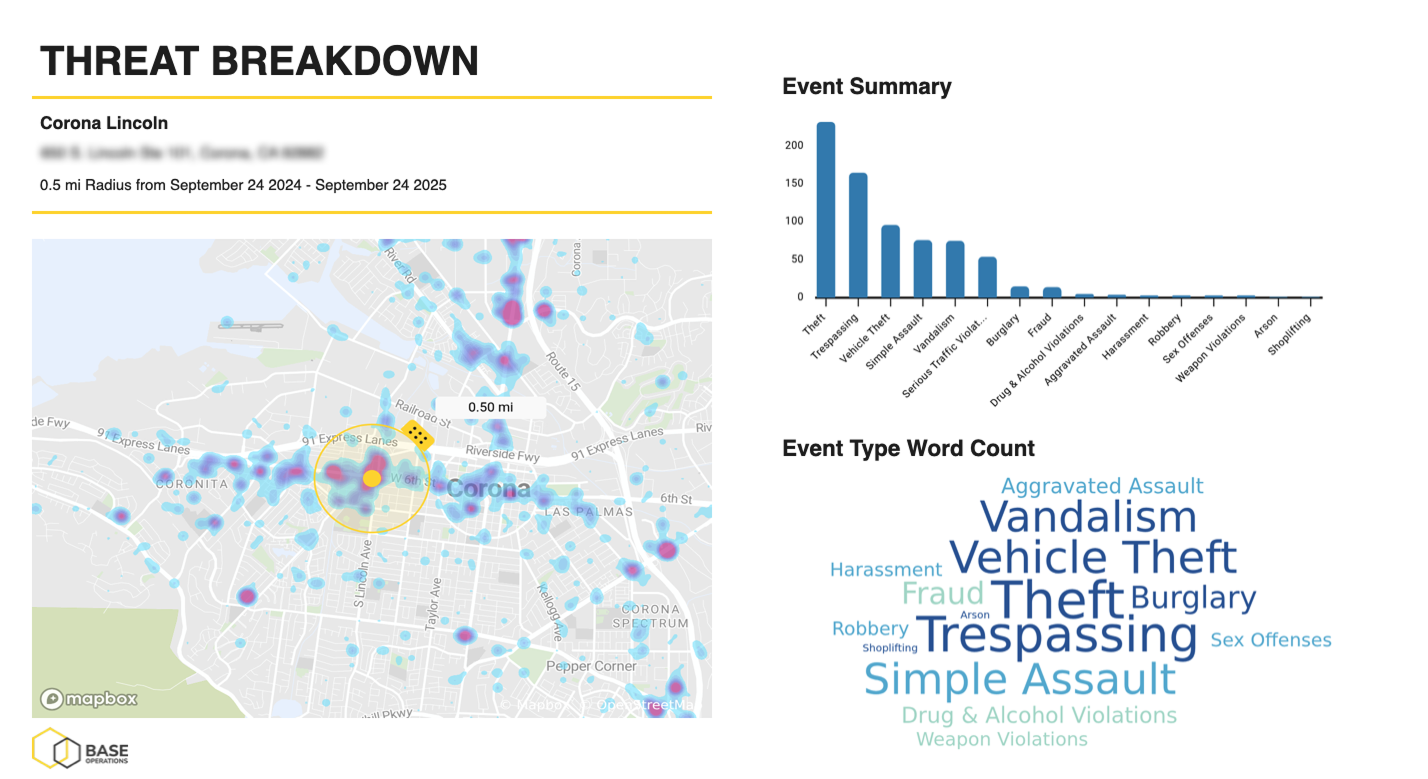
Base Operations threat report for 0.5 mile radius around branch address exported in one click. Showing event trend, threat categories, and time of day breakdown.
Regional security managers reported significantly improved confidence in their recommendations. Instead of relying on anecdotal observations, they could present data-backed proposals that demonstrated due diligence and strategic thinking. This elevated the security function's credibility throughout the organization, positioning security leaders as strategic advisors rather than reactive responders.
Looking Ahead
The credit union continues expanding its use of Base Operations beyond quarterly site assessments. The security team now monitors the My Locations Dashboard daily, identifying emerging threat patterns and proactively adjusting security postures before incidents occur. The organization is exploring integration of Base Operations intelligence into branch manager training programs and developing predictive models that correlate external threat data with internal incident patterns.
Most significantly, the credit union has positioned its security function as a strategic differentiator in member safety and operational efficiency. By demonstrating measurable risk reduction and cost optimization through data-driven intelligence, the GSOC lead has earned credibility with executive leadership and secured budget authority for future security investments justified by the same street-level intelligence that transformed the organization's approach from reactive guesswork to proactive risk management.
Related Case Studies

Financial Institution Accelerates Site Assessment Process 5x And Expands Risk Modeling Capabilities
A leading financial services firm with over $5 trillion in assets under management transforms their real estate investment process with data-driven security intelligence.

Discount Retailer Cuts Security Incidents by 75% with Data-Driven Resource Allocation
A major discount retailer with 16,000+ locations transformed their security approach by leveraging local threat data to identify patterns, optimize resource deployment, and reduce incidents at high-risk locations.
